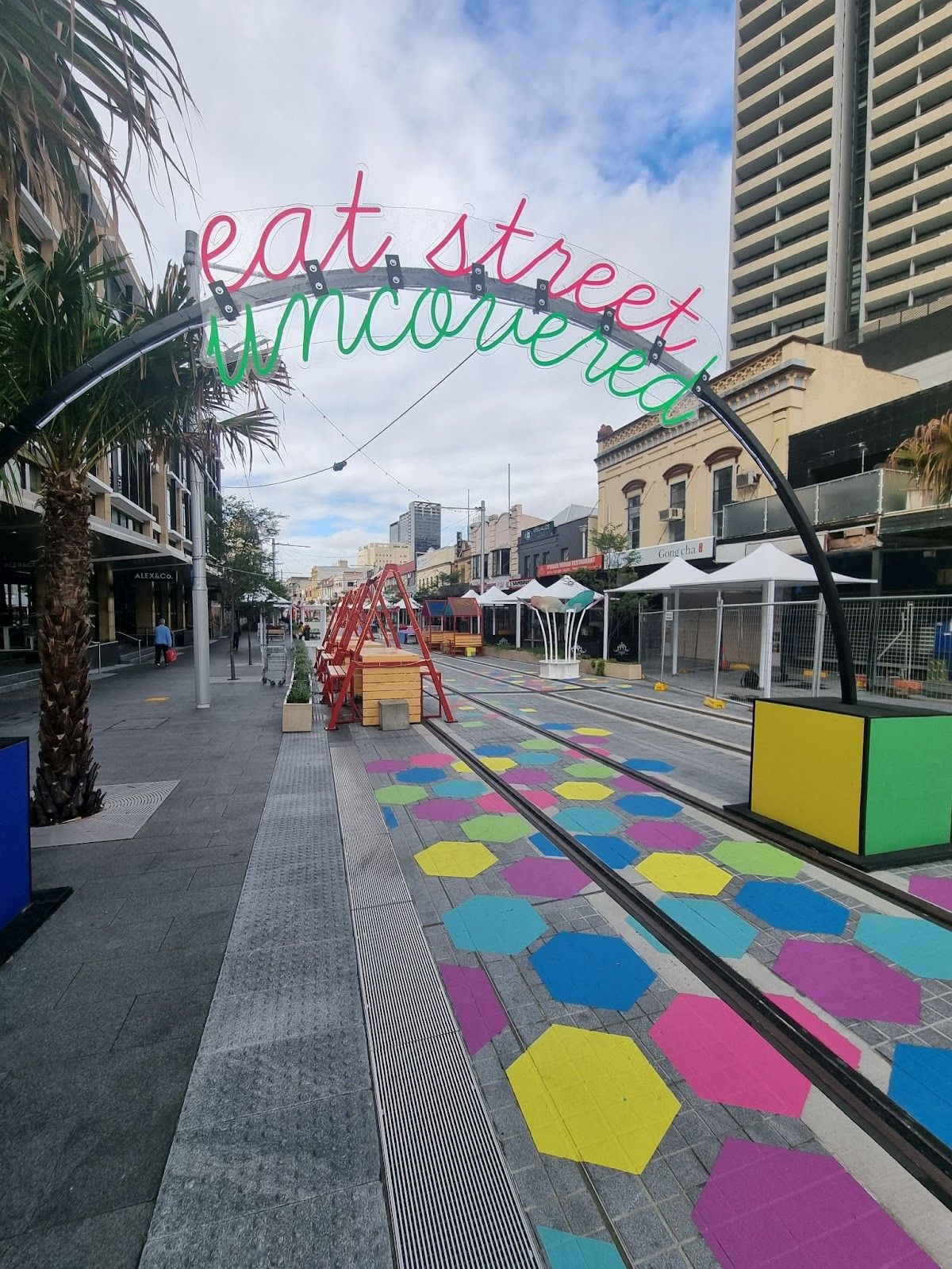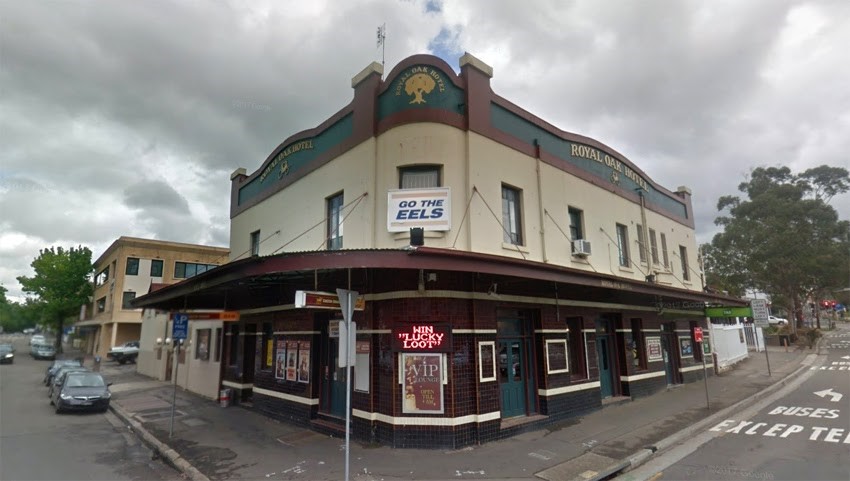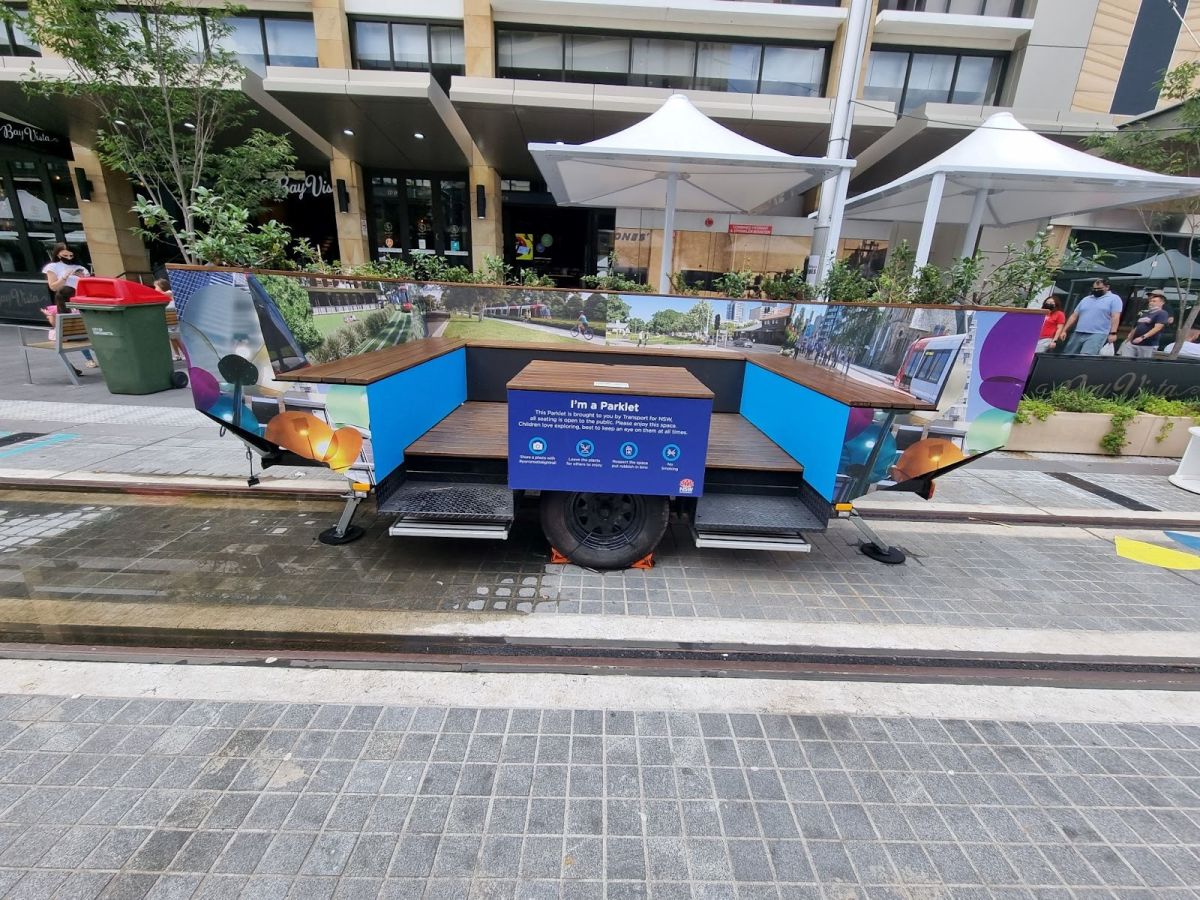
Eat Street (Photos by Melissa Summers)
Parramatta Light Rail
If you have been in Parramatta in the last two years, you would be noticing some very stark changes to its landscape. The Parramatta Lightrail is no longer a concept being spoken about or happening far off in the future, it has arrived.
About The Project
The Parramatta Light Rail will connect Westmead to Carlingford via the Parramatta CBD and Camelia. The two way track spans 12 kms and it is expected to be fully operational by 2023.
It is estimated that 28,000 people will use the light rail daily by 2026 - a promising number of potential cars off the road.
The stops along Church Street and Macquarie Street include Fennell Street, Prince Alfred Square, Eat Street and Parramatta Square.

Parramatta Light Rail Map - Image from NSW Government
First tracks were laid in November of 2020 in Westmead and created 5000 jobs in various departments of the light rail, which would help rebuild the economy after Covid-19.

Image from November 2020 Media Release Andrew Constance and Dominic Perrottet.
History of the Project
In August of 2013 Parramatta Sydney Council commissioned a light rail feasibility study and in June 2014, Premier Mike Baird committed to this study. In July of 2014 suggestions by Ms. Gladys Berejiklian, then Minister for Transport, stressed the importance of the light rail connecting health and education and included a link to and from Westmead Hospital and Western Sydney University. From 2013 to now, there have been numerous environmental studies, archeological reports and sustainability studies completed relating to the project to ensure minimal disruption and damage to the green spaces of Parramatta.
Archaeological Finds
A key priority of this project is to preserve archaeological, environmental and Aboriginal heritage. The Parramatta CBD is an area that is rich in heritage, both Aboriginal and Non-Aboriginal. In order to minimise impacting these heritage landmarks, the light rail network has been designed to use existing rail corridors. Transport NSW is working closely with agencies such as Heritage NSW and Local Aboriginal Land Council to ensure any artifacts uncovered are handled with care and assessed by heritage specialists.
Some finds during this project are being given new life. Old sandstone is being reused in kerbing and footpath inlays and other historic materials are being shared with local stakeholders such as Deerubbin Local Aboriginal Land Council.
The Royal Oak Hotel
Many locals would have enjoyed a beer or wine at the Royal Oak, which has been in Parramatta since 1813, making it one of Australia’s oldest pubs. On January 26, 2020 it was last drinks at the beloved local landmark which has already seen so much growth and change in Parramatta.
Although the Royal Oak didn’t meet the criteria for heritage listing, Transport NSW has recognised the cultural significance of the site and its local heritage value. At the rear of the property is the historical Cobb & Co Stables, this part of the property was retained and protected.
In order to preserve the history a complete archival photographic recording was made as well as the salvaging of historical materials before the hotel was ultimately removed to serve the long term interest of the Parramatta CBD which is having a frequent reliable light rail that services Eat Street. The decision to remove the The Royal Oak was not made lightly, several other routes were explored as well as reducing traffic lanes.

Images from Timegents, 2017
A Community Project
At its heart, the Parramatta light rail project, is a community one. It has been carefully planned at every stage to reflect and meet the needs of the greater Parramatta community.
Parramatta is well known as Sydney’s second CBD and with the implementation of the light rail, accessible infrastructure provides public transport options for workers, students, community members and tourists right on their doorstep.
The team behind the Parramatta light rail have regularly consulted with the community and have had a strong presence in building a genuine relationship with them. From submissions being made as to what the name of the new bridge will be to a pop up hub at the weekly farmers markets in Parramatta Square to a 24/7 information line - the community are as much a part of this project as the tracks being laid in Church Street.
At the moment while Stage 1 is still being completed, the tracks that are not yet in operation have been utilised to create community spaces along Eat Street.
The streets have been filled with outside garden furniture, interactive displays for kids and bright colourful atmosphere that creates a sense of excitement about what is happening in the second CBD of Sydney.

Eat Street (Photos by Melissa Summers)
A Changing Community
Parramatta has long been considered the second CBD of Sydney, being home to business districts, education, culture and arts. The landscape of Parramatta has always changed to meet the changing needs of its ever increasing population and The Parramatta Light Rail is the next step in ensuring it is accessible to the greater community.
![]()
Melissa Summers, Work Placement Student, Charles Sturt University, at Parramatta Heritage Centre, City of Parramatta, 2022
References:
NSW Government. (2017). Parramatta Light Rail (Stage 1) Westmead to Carlingford vid Parramatta CDB and Camelia
NSW Goverment. (2022) Parramatta Light Rail. Retrieved January 2022 from, https://www.parramattalightrail.nsw.gov.au/
Images from https://historyandheritage.cityofparramatta.nsw.gov.au/
Australia : Parramatta light rail to connect communities. (2017). MENA Report.


